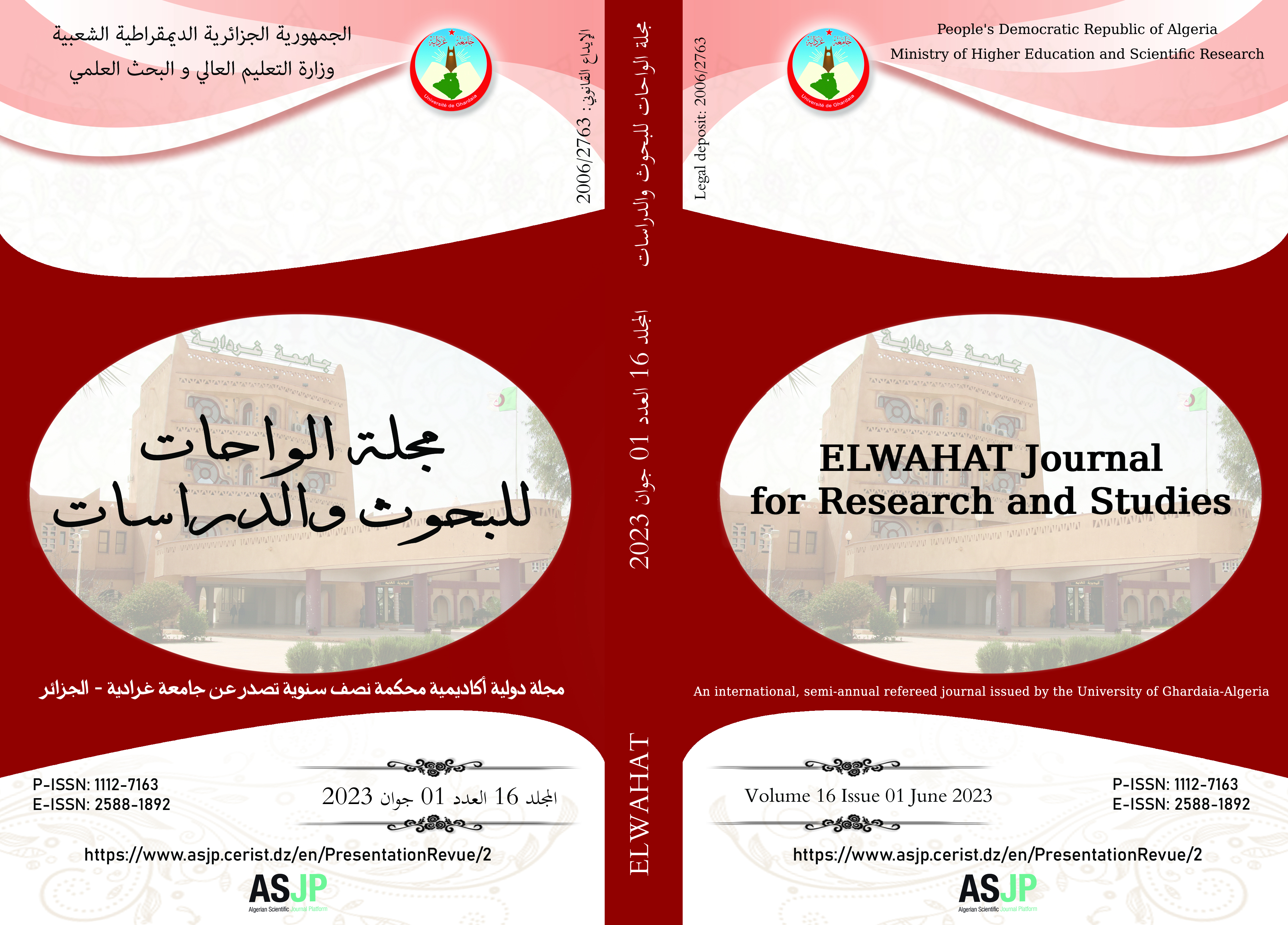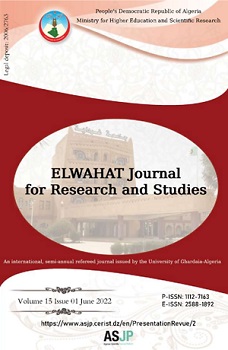Analyzing the English Language Oral Communication Needs for Algerian Employees at Business Workplace
DOI:
https://doi.org/10.54246/5q4q8092Abstract
Abstract:
This study is concerned with the analysis of the oral communication needs for Algerian employees at business workplace. The study adopts the quantitative approach in which the data were collected through a questionnaire which was distributed to (20) employees. The main results showed that most of the employees faced problems in the oral language communication aspects such as pronunciation, oral presentation, and negotiations. On the basis of the results, pedagogical recommendations are suggested for English Foreign language instructors to focus on the relevant business English oral communication skills and needs.
Keywords:
Communication needs, communication skills, business English, English for specific purposes, needs analysis, speaking performance.
ملخص:
اهتمت هذه الدراسة بتحليل احتياجات التواصل الشفهي للموظفين الجزائريين للعمل التجاري. الهدف الرئيسي من الدراسة الحالية هو تحليل الاحتياجات الشفوية للتواصل الوظيفي للموظفين في شركة "سيفيتال" بمدينة بجاية. اعتمدت الدراسة على المنهج الكمي أين جُمعت البيانات من خلال استبيان تم توزيعه على (20) موظفاً. أظهرت النتائج الرئيسية أن معظم الموظفين يواجهون مشاكل في معظم المهارات اللغوية أثناء التواصل مع الأجانب مثل النطق، والعروض التقديمية الشفوية، والاجتماعات، وايصال المهام والواجبات اليومية. على أساس النتائج تم اقتراح توصيات تربوية للأساتذة والطلاب للتركيز أكثر على احتياجات ومهارات الاتصال الشفوي باللغة الإنجليزية للأعمال ذات الصلة.
كلمات دالة:
اللغة الإنجليزية لأغراض محددة، اللغة الإنجليزية للأعمال، تحليل الاحتياجات، احتياجات الاتصال، مهارات الاتصال، أداء التحدث.
References
The communication tasks of the participants in the business context are much demanding the use of English language than ever before. The survey uncovered that the participants are participating in formal and informal business communication setting. So English language especially the oral communication skills came into play whenever they perform their tasks.
The participants really considers the importance of English language nowadays especially in business context. They insist more on the oral communication skills since English language is used more orally.
This study suggests a number of pedagogical implications which are as follow:
• Provide an ongoing professional development to support all staff to better master the English oral communication skills.
• Teachers should also vary their teaching techniques according to students’ styles and pay more attention to English for business purposes.
• Teachers should also vary their teaching techniques according to students’ styles and pay more attention to English for business purposes.
References
Brown, J. D. (1995). The elements of language curriculum: A systematic approach to program development. Boston: Newbury House.
Burkat, G. S. (1998). Spoken language: what is and how to reach it. Washington DC: Center of Applied Linguistics
Celce-Murcia, M. (2007). Rethinking the role of communicative competence in language teaching. In Soler, E. A., & Jordà, M. S. (Eds). Intercultural language use and language learning. Dordrecht: Springer.
Chomsky, N. (1964). Current issues in linguistic theory. The Hague: Mouton.
Denscombe, M. (2007). The good research guide (3rd ed). The McGraw-hill Companies: Open University Press.
Dudley-Evans, T., & St John, M. (1998). Developments in ESP: A multi-disciplinary approach. Cambridge: Cambridge University Press.
Graves, K. 2000. Designing language courses: A guide for teachers. Boston: Heinle and Heinle.
Hedge, T. (2000). Teaching and learning in the language classroom. Oxford: Oxford University Press.
Hutchinson, T., & Waters, A. (1987). English for Specific Purposes: A learning centered approach. Cambridge: Cambridge University press.
Hymes, D. (1974). Foundations in sociolinguistics: An ethnographic approach. Philadelphia: University of Pennsylvania Press.
Mouton, J. J. & Marais, H. C. (1994). Basic concepts in the methodology of the social sciences. Pretoria: Human Sciences Research Council.
Neuliep, W. J. (2006). Interculturel communication: A contextuel approach. Thousand Oaks, CA: Sage publications.
Priya, V. B. (2009). Business communication. New Delhi : New Age International Ltd.
Richards, J. C. (2001). Curriculum development in language teaching. Cambridge: Cambridge University Press.
Robinson, P. (1991). ESP Today: A practitioner’s guide. Hertfordshire: Prentice Hall International (UK) Ltd.
Samovar, L. A., & Porter, R. E. (2000). Intercultural communication: A reader. New York: Wadsworth Publishing Company.
Strevens, P. (1988). ESP after twenty years: A re-appraisal. ESP: State of the Art.
Thyer, B. A. (1993). Single-system research designs. In R. M. Grinnell., & I. L. Itasca. (Ed.). The handbook of social work research methods. England: Routledge.
Ur, P. (1996). A course in language teaching: Practice and theory. Cambridge: Cambridge University Press.
Zhang, J. (2013). The ESP instruction: A study based on the pattern of autonomous inquiry. English Language Teaching, 6, 72-77.






